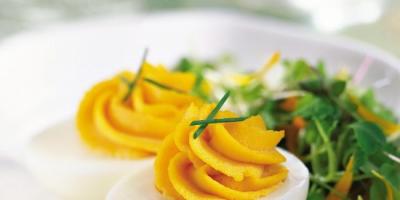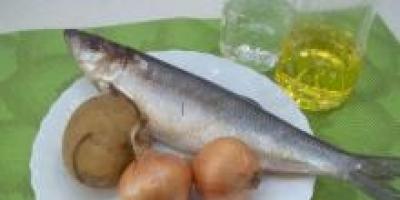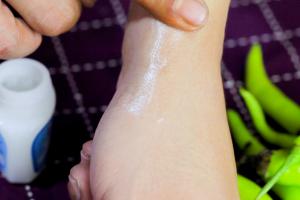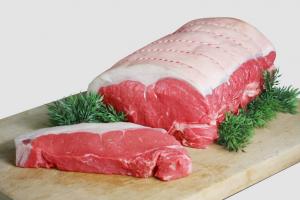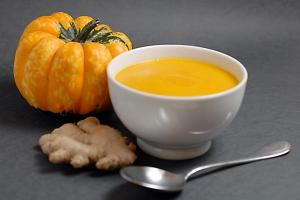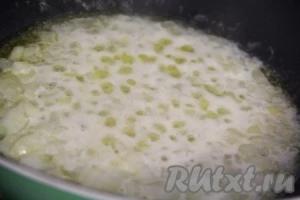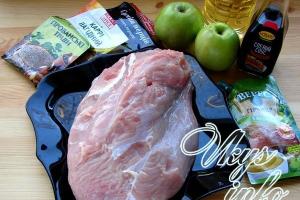Apricot juice prepared for the winter at home is an invaluable preparation. One glass of this sunny drink contains not only an amazing taste, but also a maximum supply useful substances, capable of preserving youth, improving well-being and toning the body for a long time. The following recipes will help you prepare it.
How to make apricot juice at home?
Apricot juice for the winter is the most popular preparation. It is healthy, tasty and easy to prepare. Apricots are pitted, chopped and boiled in a minimum amount of water until softened. Afterwards, they are filtered in a convenient way. Sugar is added to fresh juice, boiled for a couple of minutes, poured into jars and sterilized.
- Making apricot juice will turn into a favorite pastime if you follow a few tips.
- The quality of the juice directly depends on the raw materials, so it is better to choose fresh, ripe and juicy apricots.
- The process of sterilization of juices directly depends on the methods of their production. Thus, drinks obtained from the juicer are immediately poured into cans and rolled up. Juices squeezed out using a meat grinder or juicer are filtered, boiled for a couple of minutes, poured into sterile containers and rolled up.
- After rolling, it is better to place jars of juice in a dark place for a couple of weeks: low-quality drinks will ferment and darken.

At home, it is considered the healthiest preparation due to the pulp it contains, which provides a large amount of fiber, vitamins and low acidity, which distinguishes this juice from other drinks. In addition to a lot of useful reserves, the juice has a pleasant taste, a wonderful aroma and a moderately thick and delicate consistency.
Ingredients:
- apricots - 5 kg;
- water - 1.2 l;
- sugar - 250 g.
Preparation
- Pour 500 ml of water over peeled apricots and cook for 15 minutes.
- At the same time, cook syrup from 250 g of sugar and 700 ml of water.
- Cool the boiled apricots and rub through a sieve.
- Pour syrup into the pureed mass and cook for 10 minutes.
- Pour into jars and sterilize apricot juice for winter at home 15 minutes at 100 degrees.

Apricot juice at home through a juicer is high-quality, tasty and healthy drink, because the modern assistant will simply and quickly squeeze every last drop out of the fruit, separating the useful mass from the cake. The resulting mixture is thick, so it is diluted with water to prepare juice of the required concentration.
Ingredients:
- apricots - 2.5 kg;
- sugar - 150 g;
- water - 2 l.
Preparation
- Pass the peeled apricots through a juicer.
- Dilute the mixture with water, add sugar and cook for 10 minutes.
- Pour the hot juice into sterile jars, roll up, turn over and wrap.

Apricot for the winter is great way obtaining a pasteurized product. The process is simple: a pan of fruit is placed on a tray of water, covered with a lid and simmered over a fire. When the water boils, the heat treatment process begins, in which the juice flows through a hose into the desired container, automatically sterilizing.
Ingredients:
- apricots - 2.5 kg;
- water - 1.5 l.
Preparation
- Remove pits from apricots.
- Pour water into the bottom pan of the juicer.
- Place a second pan with holes on it.
- Place a saucepan with apricots on top.
- Cover with a lid and put on fire.
- Direct the juice collection hose in the medium saucepan into the jar.
- Cover the finished homemade apricot juice with a lid and roll it up.

Apricot juice can be prepared at home not only using modern household appliances, but also with a regular meat grinder. Despite the skepticism of many about this technique, it copes well with juicy fruits, crushing them into a thick, homogeneous mass, which most often forms the basis of juices with pulp.
Ingredients:
- apricots - 5.5 kg;
- sugar - 100 g.
Preparation
- Scroll the pitted apricots through a meat grinder.
- Squeeze out the resulting mass.
- Boil the juice with sugar for 5 minutes.
- Pour into jars and seal with lids.

Preparing apricot juice at home opens up opportunities for culinary fantasies. So, you can diversify the taste of the preparation with the help of oranges. With them, the juice will not only acquire a piquant sourness and citrus aroma, but also double the vitamin supply, to preserve which it is better to use a juicer.
Ingredients:
- apricots - 5 kg;
- orange - 3 pcs.;
- water - 500 ml.
Preparation
- Peel apricots and oranges and pass through a juicer.
- Add water to the juice and boil for 5 minutes.
- Pour into sterile jars and seal.

Apple-apricot juice is difficult and expensive to prepare. All because this drink is widely used in baby food, and therefore must be of high quality, tasty and healthy. To save everything as much as possible nutritional properties, apple juice subjected to short-term heat treatment only at the final stage.
Ingredients:
- apricots - 6 kg;
- apples - 4 kg;
- water - 2 l;
- sugar - 250 g.
Preparation
- Pour 800 ml of water over peeled apricots and cook until softened.
- Make syrup from 1 liter of water and 250 g of sugar.
- Wipe the boiled apricots, add syrup and boil for 10 minutes.
- Pass the apples through a juicer.
- filter, add to apricot and heat.

Particularly busy housewives can use the apricot juice recipe for the winter instant cooking. To do this, the fruits are whipped in a blender and boiled with water and sugar. A couple of minutes before the end of the process you should add citric acid, it will balance the taste and increase the shelf life of the product, since it is an excellent preservative.
Ingredients:
- apricots - 1.5 kg;
- sugar - 250 g;
- citric acid - 1/4 tsp;
- water - 2.5 l.
Preparation
- Steam the peeled apricots for a couple of minutes.
- Beat with a blender.
- Add sugar and water and boil for 10 minutes.
- 3 minutes before the end, add citric acid.

Apricot juice without sugar - correct and useful preparation, because the lack of sugar is perfectly compensated by the natural sweetness of the fruit, the pulp of which contains a lot of glucose. This juice will please fans of diets and those suffering from diabetes, since it is low in calories and is nutritious and does not cause strong spikes in blood sugar.
Fruit juices are one of the most popular preparations for the winter. They are tasty, healthy, quench your thirst well and are refreshing, reminiscent of summer. Apricot juice can be prepared for the winter in different ways. Most often, you can do it even without the help of kitchen appliances. Even a novice housewife can make delicious apricot nectar; you just need to know the technology for preparing this liquid delicacy.
Cooking features
Apricot juice can be prepared for the winter even without culinary skills. The process is not entirely simple, but does not require much cooking skill. Knowing a few things will help you get a perfect result without spending much effort.
- Ripe apricots release juice faster than unripe ones, although both are suitable for making apricot juice.
- Before preparing juice from apricots, the fruits must be washed, dried, cut in half and the pits removed. If they are difficult to separate, you can use a special spoon.
- If you need to calculate the weight of pitted apricots, then you need to subtract 10 percent from the weight of whole fruits.
- The yield of juice depends on the variety of apricots, their degree of ripeness, the presence of pulp in the juice and the method of processing the fruit. From a kilogram of fruit you can get from 0.25 to 0.75 liters of juice, on average 0.5 liters.
- It is not recommended to use aluminum utensils when preparing apricot juice. This material forms harmful substances when in contact with acids.
- The juice must be poured into sterilized jars and closed. metal lids ensuring tightness. Lids should be boiled before use.
Apricot juice is often made with the addition of citric acid, lemon juice or other fruits. This not only gives the drink the missing sourness, but also improves its preservation.
Classic recipe for apricot juice for the winter
Composition (per 1 l):
- apricots – 0.5 kg;
- water – 0.75 l;
- sugar – 50 g.
Cooking method:
- Wash the apricots and dry with a towel. Cut the fruits in half and remove the seeds.
- Place the apricot halves in a saucepan and pour 0.5 liters of water into it. Bring to a boil over low heat and cook for 10 minutes.
- Cool the apricot mass and rub it through a sieve. The skins will not pass through it, so the drink will have a delicate consistency.
- Pour sugar into the apricot puree and add the remaining water. Boil the drink for 5-10 minutes, removing any foam that appears on the surface.
- Sterilize the jars and fill them with juice, leaving a short distance to the edges.
- Roll up the jars with the prepared lids, turn them over and cover with a blanket. Leave to cool as is for additional preservation.
Store apricot juice with pulp prepared according to classic recipe, possible at room temperature.
A simple apricot juice recipe
Composition (per 3 l):
- apricots – 1 kg;
- water – 2 l;
- citric acid – 4 g;
- sugar – 0.3 kg.
Recipe for the occasion::
Cooking method:
- Place the pitted apricots in a saucepan. Pour water into it so that its level reaches the middle of the apricot mass.
- Cook the apricots over low heat until softened, and use a blender to puree them.
- Add sugar, citric acid and remaining water.
- Place the pan with the apricot mixture over low heat, bring to a boil and cook for 10 minutes, skimming off the foam.
- Pour the juice into prepared jars, filling them to approximately the shoulders. Seal tightly. Leave to cool upside down in a steam bath.
Juice by this recipe It also turns out with pulp. It has a balanced flavor, nice color and stands well at room temperature.
Apricot juice through a juicer
Composition (per 3 l):
- apricots – 2-2.5 kg (to obtain 1.5 liters of juice);
- water – 1.5 l;
- sugar – 0.2-0.25 kg;
- lemon (optional) – 0.5 pcs.
Cooking method:
- Peel the apricots and pass through a juicer.
- Dilute apricot juice with water in a 1:1 ratio. Add sugar and juice squeezed from half a lemon.
- Place the mixture over low heat and boil for 10 minutes. The foam protruding on the surface must be removed at this time so that the juice does not spoil ahead of time.
- Sterilize jars and matching lids.
- Fill the jars with juice, seal them, and turn them over. Cover with a blanket and leave under it until cool.
The juice according to this recipe is clear, without pulp. It can be stored in the pantry or any other room where you usually have winter supplies.
Apricot juice through a juicer
Composition (per 0.65-0.75 l):
- apricots – 1.5 kg;
- sugar – 40-60 g;
- water - in accordance with technical requirements unit.
Cooking method:
- Prepare the apricots by washing, drying and pitting them.
- Place the fruits in the upper compartment of the juicer, sprinkle them with sugar for better separation of the juice. If you want to give the juice a spicy aroma, you can put a sprig of mint, a vanilla pod or other spices in the same compartment.
- Pour water into the lower part in the amount recommended by the device manufacturers.
- Check whether the tube for draining the finished juice is closed.
- Place the juicer on the stove or plug it into a power outlet if your juicer is electric.
- Leave for 45-90 minutes. The time depends on the type and power of the juicer.
- Pour the juice through a straw into a sterilized jar.
- Seal the container and let cool in a steam bath. The juice obtained using a double boiler does not need additional boiling.
If you want to make a less concentrated drink, you can dilute it with water, add sugar and lemon juice to taste, boil for 10 minutes and only then seal it in jars.
Apricot juice for the winter can be prepared with pulp and transparent. It will taste better if you add a little sugar to it, lemon juice or citric acid. Regardless of the preparation method, apricot juice stands well at room temperature.
Product Matrix: 🥄
First, I wash the apricots thoroughly and split each one in half to remove the pits.
Naturally, a juicer makes life a lot easier. Making juice with it is a pleasure. 

I add peeled apricots to the juicer, resulting in a beautiful puree-like mass. It is quite thick, you can even see it in the photo. 
That's why I dilute it with water. To save space and containers, you can prepare thick juice, which requires diluting with water before use. See what is best and most convenient for you, based on this, add the right amount of water. 

Do you see in the photo? Apricot puree is diluted with water in an almost 1:1 ratio.
I put the pan with the diluted juice on high heat and, stirring occasionally, wait until it boils, after which I add sugar and cook for about another 10 minutes. When people ask me how to make delicious apricot juice at home, I always advise adding a little sugar, since these fruits have quite a sweet taste. Sometimes I even add a little extra sourness to the juice by adding citric acid or juice squeezed from lemons. After boiling, the foam can be removed or left, making sure that it does not “run away”.
I sterilize the jars in the oven for 15 minutes at 150°C. I boil the lids for them. 
I pour the juice into hot, freshly sterilized jars so that the foam seems to overflow a little over the edge, immediately cover with the prepared lids, roll up, place upside down, cover with a protective layer from stickiness, then with a blanket and leave until the morning. 
Delicious apricot juice is ready! In the morning I just wash the jars and put them in the pantry for storage.
How to make apricot juice at home by hand:
The juice is prepared by hand in almost the same way, except that the apricots must first be boiled. I pour the prepared apricots into an enamel pan of sufficient size, pour cold water on top so that the fruit is covered quite a bit, put it on high heat on the stove, cover the top with a lid and wait for it to boil, periodically looking under the lid and thoroughly stirring the apricots with a large wooden spoon. If the whole mass of apricots in the pan turns out to be too dense and does not want to interfere, then add a little more water until the fruit can be mixed, reaching to the very bottom.
After boiling, I do not remove the resulting foam, but simply continue to cook the apricots until slightly softened. As a rule, ripe fruits need literally 2-3 minutes, but greener ones can cook for up to 10 minutes. My favorite thing is to prepare apricot juice for the winter at home from a mixture of ripe and slightly greenish fruits. In this case, I cook them for about 5 minutes.
I leave the apricots in the pan, covered, to cool to a slightly warm temperature or, if I don't have time to wait, overnight.
After cooling, I add the apricots in portions, along with the water in which they were boiled, into a colander placed over a large enamel pan, and, after the liquid has drained, I carefully rub them with my hands using rotating and pressing movements until there is nothing left to squeeze out. I don’t throw away the remaining pomace, but place it in an enamel bowl.
I repeat the procedure until the pan with boiled apricots is completely empty.
In order not to lose a single shade of the taste of apricot juice prepared for the winter at home, I fill the pomace with cold water, stir, boil for about 5 minutes, add to a colander and grind with a spoon, and finally throw away the rest.
Next, I mix the resulting thick mass well and, as in the case of obtaining juice from a juicer, dilute it with water to the desired consistency, wait for it to boil, add sugar, boil again for about 10 minutes, pour it into sterilized jars, roll it up, wrap it and hide it until the morning, after which I wash it and go to the bins.
The finished juice with pulp has an amazing aroma and rich taste, which is especially pleasant to taste on a cold winter evening.
Save to "Cookbook"Apricot is used in making jam and in cooking; its fruits are successfully dried and compotes are made from them. This fruit contains many vitamins, but you need to know: apricot juice, what the benefits and harm are for the human body, especially when consumed regularly.
Composition of apricot juice
If your general health deteriorates and to maintain tone, doctors recommend consuming vitamins and microelements. Apricot juice contains many substances that are beneficial to human health. It includes:
- fiber;
- organic acids;
- carotene;
- vitamins B1, B2, B3;
- ascorbic acid;
- trace elements: potassium, magnesium, calcium, iron, iodine, etc.
In cooking, apricot is used as a filling for baked goods, in pastry creams, and added to ice cream or cocktails.
What are the benefits of apricot juice? One of its main properties is to slow down the aging process in the body and prolong human life.
Benefits of the drink for the human body
The significant benefits of apricot juice for human health are undeniable. After all, apricot fruits:
- remove waste and toxins;
- provide useful action on the intestines;
- have a beneficial effect on the circulatory system (clean blood vessels from cholesterol, increase their elasticity, improve blood flow);
- support normal functioning of the nervous system;
- provide protection to bone tissue and mucous membranes;
- improve metabolism;
- maintain good vision;
- slow down the aging process (increase skin elasticity and firmness, strengthen hair, improve the functioning of the immune system);
- improve brain function and memory.
The drink is recommended for people suffering from diseases of the cardiovascular system and gastrointestinal tract. It is used for anemia and cancer. with their own healing properties it has a positive effect on people with high blood pressure. Freshly squeezed juice is recommended for pregnant women to drink.
This fruit is used in dietary nutrition in the fight against excess weight. Thanks to its qualities, it helps normalize metabolic processes in the body, burns fat, rids the body of excess fluid, promotes normal intestinal function (helps with constipation, gas accumulation, etc.).
Apricot juice is also used as a topical remedy against acne and blackheads on the skin.
Drink consumption and contraindications
You can drink the drink from 100 ml to 1 liter per day, for example, take 3 tbsp. l. several times a day. It is better to drink the juice freshly squeezed (storing in the refrigerator is not recommended).
When purchasing in a store, you should pay attention to the consistency of the juice: the drink should have pulp, avoiding the addition of flavorings and flavor enhancers.
During preventive treatment with this healing drink, you should constantly monitor changes in the body, and do not drink too much at one time.
Apricot juice is contraindicated for people suffering from diabetes or problems with the thyroid gland. It is not recommended to use it if you have hepatitis and other liver diseases, or if you have an individual intolerance to the product.
Important! When making juice, you cannot use seeds: they have a destructive effect on the human body.
